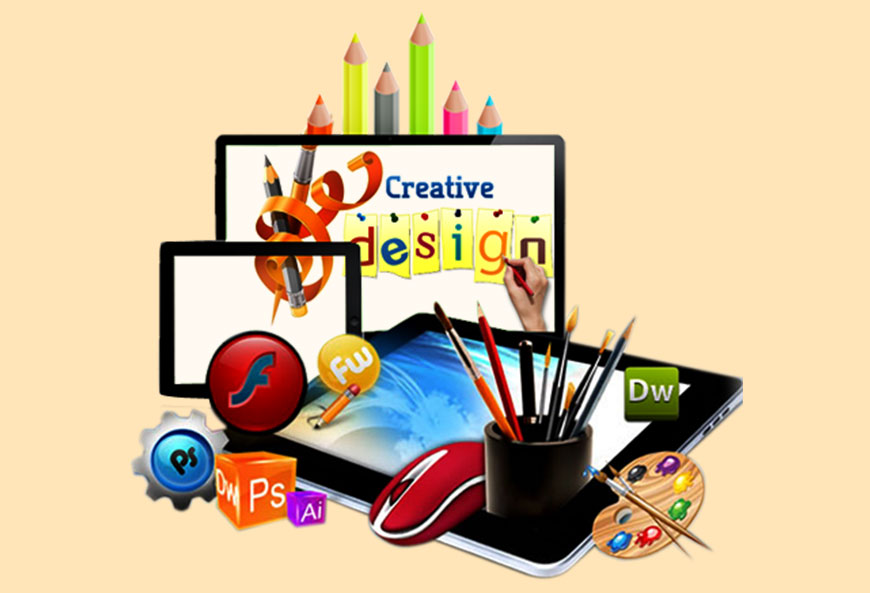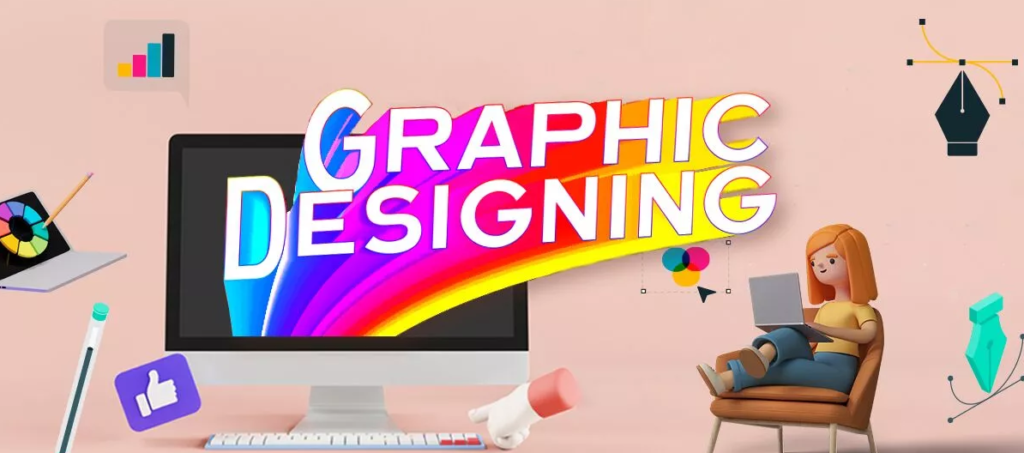Graphic design is an essential field that combines creativity, communication, and technology to create visually appealing and effective designs. From logos to websites, advertisements to social media posts, graphic design plays a pivotal role in the visual representation of a brand or message. Whether you are a beginner or a seasoned designer, understanding the fundamentals of graphic design is crucial to producing high-quality, engaging visuals. For those in Lahore looking to enhance their skills, enrolling in graphic designing courses in Lahore can provide hands-on experience and expert guidance to master the craft.

- Line
Lines are one of the most basic and essential elements of design. They can be used in numerous ways to guide the viewer's eye and create emphasis. Lines can be straight, curved, diagonal, or organic, each evoking a different feeling. Horizontal lines, for instance, suggest stability and calmness, while vertical lines convey strength and power. Diagonal lines add a sense of motion or direction, while curved lines often evoke feelings of softness or elegance.
Lines are used to separate elements, create borders, add texture, or simply guide the viewer's focus to the key aspects of the design.
- Shape
Shapes are another fundamental element of graphic design. They are created by connecting lines to form an enclosed space, and they come in many forms – geometric (squares, circles, triangles) and organic (freeform, irregular shapes). Shapes can convey different messages depending on their form.
For example, squares and rectangles are perceived as stable and trustworthy, while circles are seen as harmonious and complete. Triangular shapes can suggest movement or tension. Using these shapes strategically in design helps convey specific emotions and messages to the audience.
- Color
Color is one of the most powerful tools in graphic design. It is not only a visually attractive element but also plays a significant role in setting the mood, tone, and emotional response of the design. Colors are often associated with certain psychological effects, which is why selecting the right color palette is essential.
For instance, red is often associated with passion or urgency, while blue signifies calmness and professionalism. Yellow is often linked to happiness and energy, while green symbolizes nature or tranquility. Understanding color theory, including complementary, analogous, and contrasting color schemes, helps designers create harmony and impact in their designs.
- Typography
Typography refers to the use of text in design. It's not just about choosing a font, but understanding how to arrange text in a way that is readable, visually appealing, and effective. Good typography ensures that the text complements the design rather than detracting from it.
Designers need to consider aspects such as font choice, size, spacing (leading and kerning), and alignment. Fonts convey different personalities, with serif fonts often being associated with tradition and professionalism, while sans-serif fonts offer a modern, clean feel. When combining multiple fonts, it's important to maintain balance and legibility.
- Space (White Space)
White space, or negative space, is the area between and around elements in a design. It is often overlooked, but it's an important aspect of design that helps create balance and harmony. White space helps make the design more legible and less cluttered, guiding the viewer's eye smoothly across the layout. White space is crucial for creating visual breathing room and drawing attention to key elements. It can be used strategically to highlight certain areas of the design, ensuring that the message is communicated clearly. If you're interested in learning more about utilizing white space and other key principles, a graphic designing course in Pakistan can provide you with comprehensive knowledge and practical experience to create stunning and effective designs.

- Contrast
Contrast is the difference between elements in a design. It can be achieved through differences in color, size, shape, texture, or font. Contrast is essential because it creates emphasis and helps direct the viewer's attention to the most important elements of the design.
For example, using light text on a dark background creates strong contrast and makes the text stand out. Likewise, contrasting fonts or sizes can highlight headings, subheadings, or calls to action. Contrast not only helps create visual interest but also enhances readability and accessibility.
- Balance
Balance refers to the distribution of elements within a design to create a sense of visual equilibrium. A well-balanced design feels stable and harmonious. There are three types of balance in graphic design: symmetrical, asymmetrical, and radial.
- Symmetrical balance occurs when elements are arranged evenly on either side of a central axis. It creates a formal, orderly look.
- Asymmetrical balance is when elements are unevenly distributed but still achieve a sense of balance through varying size, color, or positioning.
- Radial balance is when elements are arranged around a central point, creating a circular or spiral effect.
Choosing the right type of balance is essential to convey the desired message and mood of the design.
- Proximity
Proximity refers to the grouping of related elements in a design. Elements that are related should be placed close together, while unrelated elements should be spaced apart. This principle helps to organize the content and makes the design more intuitive.
By grouping similar items together, you create a clear hierarchy and make it easier for viewers to understand the relationships between different elements. Proximity helps to reduce visual clutter and improves the overall flow of the design.
- Hierarchy
Hierarchy refers to the arrangement of elements in a way that signifies their importance. This is achieved through variations in size, color, contrast, or position. By using hierarchy, designers can guide the viewer's eye and direct attention to the most important aspects of the design first. For example, a large, bold headline at the top of a page will naturally draw the viewer's attention before smaller body text. The use of hierarchy helps convey the message in an organized and logical manner, ensuring the design communicates effectively. To learn how to master these techniques and more, consider enrolling in the best graphic designing institute in Lahore, where you can gain expert insights and hands-on training in creating visually compelling designs.
- Repetition
Repetition refers to the reuse of elements throughout the design. Repeating colors, shapes, or textures can create consistency and unity, helping to reinforce the overall design aesthetic. Repetition also makes designs feel cohesive and organized, contributing to the creation of a brand identity.
In branding, consistency in the use of logos, colors, and typography across various media reinforces the brand's message and strengthens its recognition.

Conclusion
Graphic design is an exciting and dynamic field that blends creativity and communication. By understanding and applying the fundamentals of graphic design—line, shape, color, typography, space, contrast, balance, proximity, hierarchy, and repetition—designers can create visually engaging and effective compositions.
For those looking to refine their skills and build a strong foundation in graphic design, skills up academy offers specialized courses that provide in-depth training.
Contact
For any inquiries or assistance, feel free to contact us at 0321 1111 218.





